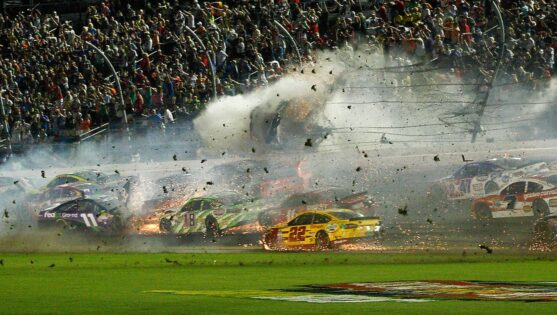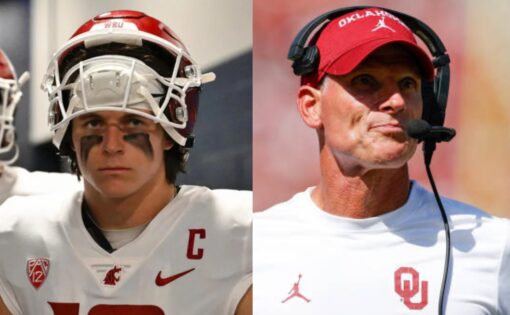Hey, NASCAR fans! Buckle up, because we’re diving into a story that’s got the racing world buzzing. Cody Ware, the gritty driver for Rick Ware Racing, recently walked away from a crash that could’ve rewritten his career, or worse. It’s the kind of moment that makes you realize just how wild this sport can get, with cars screaming past at speeds topping 200 mph on superspeedways and still hitting triple digits on tricky street courses like Chicago. Days after the dust settled, Ware opened up, and his words are a raw look at what it’s like to stare down disaster.
Let’s rewind to a pivotal moment in NASCAR history for some perspective. Back in 2001, the sport lost Dale Earnhardt Sr. in a last-lap wreck at the Daytona 500. That tragedy wasn’t just a wake-up call. It was a full-on alarm, pushing NASCAR to roll out game-changers like the HANS device and SAFER barriers.
Those moves have saved lives, and Ware’s story is proof they’re still paying off. Want a value-added nugget? Did you know the HANS device alone has cut fatal head and neck injuries by over 80% since it became mandatory? That’s the kind of stuff that keeps drivers racing and fans cheering. So, what went down in Ware’s latest scare? Hang tight; let’s peel back the layers.
Cody Ware lays bare devastating cockpit damage
Picture this. It’s July 6, 2025, at the Grant Park 165 on Chicago’s street course. Cody Ware’s No. 51 Ford Mustang Dark Horse is charging hard with just two laps to go when disaster strikes. A brake rotor failure sends him barreling into the tire barrier at Turn 6, clocking an estimated 93 mph. “Pretty much everything from the interior of the car, as well as my gear, was killed on that impact,” Ware told SiriusXM NASCAR Radio.
Cody Ware details the impact of his crash at @NASCARChicago and commends the safety advancements of the Gen 7 car.
“That’s a testimony to the work that was done between then and now, because I was pretty worried the whole way to the wall.”
More → https://t.co/MKhd9eLpQA pic.twitter.com/z37EBdPhfo
— SiriusXM NASCAR Radio (Ch. 90) (@SiriusXMNASCAR) July 10, 2025
The damage was unreal. His helmet’s EPS foam cracked, the HANS device took a beating, and even the steering wheel bent under the force. That’s not just a fender bender; it’s a full-on a—— on man and machine, yet Ware walked away bruised but breathing. The real heroes here? The safety gear and the folks who make it happen.
“You know, thankfully, getting a new helmet, a new HANS. It’s just a testimony to all the safety of people that are selling us helmets and HANSes as well as the steering wheels from Max Pappas,” Ware said. Shouting out to his team and the safety crew at Rick Ware Racing. This wasn’t luck, it was engineering at work. The EPS foam in his helmet, designed to crush and absorb energy, did its job, while the HANS device kept his neck from snapping under the G-forces.
Add in a steering wheel built to flex rather than break, and you’ve got a survival kit that turned a potential tragedy into a tough day at the office. But for Ware, this wasn’t a one-off scare; it brought back ghosts from 2022. “I look back at 2022 and that’s all that I had in my mind for those five seconds,” he confessed. Recalling a brutal frontal hit at Texas Motor Speedway that left him with a broken foot.
This time, he braced for the worst. “I was pretty worried that whole way to the wall that it was going to be another injury-inducing incident.” What changed? The Next Gen car’s front clip, beefed up since his Texas wreck, to crumple better and soak up impact. “I think the progress with the safety of the Next Gen cars has definitely come a long way,” Ware added. That’s the kind of evolution that keeps drivers in the game—and it’s got us wondering what’s next for NASCAR’s safety playbook.
NASCAR’s safety spotlight: The next-gen edge
Ware’s Chicago crash didn’t just test his nerve. It put NASCAR’s safety upgrades under the microscope. The Next Gen car, rolled out in 2022, was built tougher, with a front clip designed to deform and dissipate crash energy. Ware felt the difference firsthand. “The chassis would definitely deform a lot more on those impacts,” he noted—a nod to how far the car’s come since his 2022 injury. Recent tweaks, like stronger welds and better energy absorption, were battle-tested in Chicago, proving NASCAR’s not resting on its laurels.
This isn’t just about one driver’s story. It’s a league-wide win. Take Kyle Larson’s wild flip at the 2024 Charlotte Roval. He walked away unscathed, thanks to the same Next distinct safety, a valid link. NASCAR’s safety boss, John Patalak, put it straight. “Every incident teaches us something new.” That’s why you’re seeing tighter inspections and tougher crash tests these days, because every bruise tells a story.
So, what’s next? Ware’s crash might just push NASCAR to dig deeper into brake system reliability. Those rotors failing at 93 mph isn’t a fluke you ignore. “I don’t want to be the test dummy for that,” Ware laughed, “but thankful to see a dramatic difference.” As the 2026 season looms, expect NASCAR to keep tweaking, because keeping drivers like Ware safe isn’t just a goal; it’s the finish line.
The post Days After Surviving Gut-Wrenching Crash, NASCAR Driver Spills Horrifying Details appeared first on EssentiallySports.



